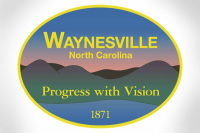Buck Knob residents, officials seek fire protection compromise
After years of fruitlessly demanding fire protection from a local volunteer fire department, homeowners on Buck Knob Island in the middle of Lake Glenville are finally inching toward their goal.
So far, the state fire marshal’s office has assessed the situation and provided recommendations to local officials on how to cope with the sticky situation.
Jackson County Manager Ken Westmoreland has instructed the county fire marshal to come up with a cost estimate for providing fire protection to the island, while Cashiers Fire Chief Randy Dillard said he hopes to have a proposal for fire protection ready within a couple of weeks.
Dillard did not provide any other comment since Buck Knob homeowners have threatened legal action in the past.
Jackson County commissioners had planned to discuss the issue at their meeting in Cashiers on Monday, but the meeting was cancelled due to bad weather.
According to Brian Colona, president of the Buck Knob Homeowners Association, Jackson County would like to see a comprehensive plan that addresses fire protection not just for Buck Island, but also for two other islands on Lake Glenville: a smaller island that houses only one residence, and another island that is yet to be developed but can accommodate 10 to 12 homes.
The final decision about fire protection, however, rests with the Cashiers/Glenville Fire Department’s nonprofit board of directors, since Jackson County is not the entity that provides those services.
Jackson County, which does contribute significantly each year to fire departments across the county, is currently acting as mediator to hopefully settle the dispute between the fire department and the Buck Knob Homeowners Association.
One possible solution is to purchase fireboats, which can effectively tame fires on islands as long as each home lies within 1,000 feet from the lakeshore. Kristin Milam, spokeswoman for the state fire marshal, said such is the case for houses on Buck Knob.
“If the fire department can successfully purchase one of those, that would solve a lot of problems,” said Milam.
But a fire protection consultant the homeowners hired earlier concluded that a fireboat would not provide adequate service to most of the homes on the island, according to Colona. The fireboat may not provide full coverage for the three lots that sit high at the crown of the island and only partial coverage for the 16 lots ringing the island’s perimeter.
“The main concern and problem with the fireboat is that it’s limited,” said Colona. “The fireboat would provide no protection to the back side of the homes.”
The consultant’s suggestion was to install a high capacity pump permanently on the island, so it could easily draw water from Lake Glenville. The consultant also recommended that fire hydrants be strategically placed throughout the island.
Colona said a fire truck and all equipment could be stored on the island, so that only the firefighters would have to be transported to Buck Knob, speeding up response times. The homeowners are willing to put up community land for that purpose.
The Buck Knob Homeowners Association has even offered use of two boats to rush firefighters out to the island, which lies just 250 yards from the shore. Colona said that the fire department indicated that it would instead maintain its own boats to ensure that they meet state standards.
Property owners on Buck Knob have campaigned to bring fire protection there for years not only to improve safety, but also to lower homeowners’ insurance costs.
The island has the lowest fire protection rating of class 10, which inevitably equates to higher charges for homeowner’s insurance.
The Cashiers/Glenville Fire Department has said that Buck Knob, however, is not the only area in Jackson County with such a rating. The department would not state where else in their coverage area has a rating of 10.
Buck Knob homeowners have argued that as taxpayers, they should be provided what they consider a basic service. Colona said that Buck Knob homeowners contributed about $48,000 in taxes in 2008 and a total of about $130,000 from the three-year period prior to 2008.
Lake island dwellers lobby for fire protection
Homeowners on Buck Knob Island in the middle of Lake Glenville say they are owed fire protection by local volunteer firefighters and have appealed to Jackson County commissioners to settle the conflict.
The homes lie within the 135-square-mile territory covered by the Cashiers/Glenville Fire Department. The volunteer fire department has refused to accept the island as part of its jurisdiction, citing the difficult nature of transporting firefighters and equipment on boats to the island in the case of a fire call.
As a result, the homeowners pay exorbitant insurance rates. One homeowner, Joey Bennett, is paying $14,000 a year for his house insurance. If the island was included in the fire department’s coverage area, it could drop to just $5,000 a year.
A dispute between the property owners and Cashiers Fire Chief Randy Dillard has been brewing for several years. Last month, the homeowners shared their plight at a county commissioners meeting. Bennett said if they don’t get a resolution, they will go to court.
“We do not want to go to court. We do not want to sue Jackson County. We just want our basic right of fire protection,” said Bennett, 48, who maintains a full-time residence in Florida where he is an oncologist.
Fire protection is not provided by the county, but by volunteer fire departments, which function as private entities. The county makes an annual contribution to the fire departments. For the Cashiers district, that contribution amounted to $135,000 out of the fire department’s $450,000 annual budget. The difference is raised through private donations from homeowners. Bennett said he is a loyal contributor to the fire department.
The Cashiers Fire Department has its own nonprofit board of directors that will ultimately make the decision of whether to expand fire protection to the island. Dillard said he would not comment on the issue since the homeowners have threatened legal action.
The county has entered the fray as a mediator.
“We are trying to find a solution to solve both the Cashiers Volunteer Fire Department’s dilemma in terms of liability and to find an affordable way for the homeowners to get the fire service,” County Manager Ken Westmoreland said.
Who should pay?
Bennett argues that while separated from shore by water, it is actually quicker to get to the island than many of the remote subdivisions tucked away on mountainsides at the end of long, twisty roads. It is just 250 yards from the shore to the island.
Bennett has a plan to install all of the infrastructure and equipment firefighters would need on the island, other than personal gear. That calls for pumps to draw water from the lake, a system of hydrants, and a large pick-up truck outfitted with a tank and hoses that could tie into the hydrant system. The pump would have a back-up generator if power went out.
Bennett estimates the cost would be $150,000. He would like to see the county pay for it, noting that the taxes paid by property owners on the island each year amount to about $50,000 a year from the island as a whole.
“We get nothing for it. We believe this is something we are entitled to,” Bennett said.
Westmoreland said the island homeowners sought the exclusivity offered by living on an island and doesn’t think the county commissioners will want to foot the bill for special fire service. Westmoreland would like to see a special fee paid by the property owners on the island to fund fire protection. Given the high insurance rates of homeowners, whatever homeowners had to chip in for fire protection would still result in a net savings, Westmoreland said.
Bennett said the property owners would be willing to contribute at some level.
“We will assist in a reasonable fashion,” he said.
But he doesn’t think they should have to.
“I personally pay over $5,000 a year to Jackson County. I don’t live here. My kids don’t go to school here. The one basic service I need, they won’t provide,” Bennett said.
Of course, many property owners don’t have children yet still have to pay taxes to support the education of other children. And there are county services like restaurant inspections by the health department, the library and erosion enforcement that are integral to society.
Bennett said he doesn’t mind paying those taxes, but he also doesn’t expect to get the cold shoulder when it comes to the one service he needs that everyone else seems to get.
“I think any community in the county that was excluded would feel the same,” Bennett said.
However, the island is not the only area in the county with the lowest fire protection rating of a class 10 according to insurance standards.
“They are not the only people at all. There is a lot of the county that is still unprotected,” Dillard said. “A lot of our department’s district is still a class 10. They are basically no different than the island people.”
The closer a home is to a fire station, the better insurance rate they get. The Cashiers/Glenville Volunteer fire department has such a huge territory to cover, it has four stations and 17 trucks, helping more homeowners achieve a better rate thanks to closer proximity, Dillard said.
The fire department responded to 472 fire calls last year with 45 volunteers. The calls don’t include rescue, which is done by a separate volunteer rescue squad.
There is one other island on Lake Glenville with a home on it, and another island that may have homes in the future. Westmoreland would like to see a solution that could be applied to all the islands. A representative from the N.C. Insurance Commission is visiting this week to offer input on the situation.
Despite Bennett’s claims that the county could have a liability case on their hand if someone was hurt in a fire the department refused to respond to, Westmoreland said the county has no legal obligation to provide fire service.
Westmoreland visited the island after homeowners came to the commissioners. Bennett said he appreciated that and thinks Westmoreland will try to broker a deal.
“His statement was this is something that can be done. It is just figuring out how to do it,” Bennett said.
Island ins-and-outs
The 19-acre island has 19 lots, all of them sold but only eight have been built on. Every home has a sprinkler system. It is mandated in the homeowners covenants, Bennett said.
As development and lot sales got underway in 2000, Dillard appeared at a county commissioners meeting and asked the island to be dropped from its coverage area on fire protection maps. The homeowners say the developer of the island was never told. Some property owners had already bought lots but were not informed. Those who came later, including Bennett, were never told the lot they were about to buy lacked fire protection.
Bennett claims the failure to notify property owners was illegal and could be ground for a lawsuit against the county.
Property owners finally learned of the situation in 2004, when one lot owner building a house tried to get insurance. The insurance agent writing the policy actually discovered the gap in service.
The island has a simple road network: a single road that circles the island about halfway up. It’s no more than 100 feet from the road down to the homes that ring the lakeshore, and another 100 feet up to lots at the top of the island. The loop road was used by heavy construction vehicles, furniture movers and even concrete haulers who piped concrete to poor house pads and driveways.
A large 80-foot barge is docked on the shore of the lake to carry major loads out to the island, which was necessary during construction, Bennett said.
“It holds concrete trucks and loaded lumber trucks,” Bennett said. But it could hold ambulances and fire trucks, too.
The island is just 250 yards off the mainland, with the barge trip taking only five minutes. Motor boats take a couple of minutes.
The island also owns a fleet of three pontoon boats. The property owners have a caretaker in a lake house on the shore who is on-call 24 hours a day to shuttle people back and forth when necessary, whether it’s dinner guests or medics. Medics responded one night when a visiting guest at one home went into a diabetic coma. From the time they called 911, medics were there in 12 minutes with a stretcher.
In the event the caretaker is not around, the keys are left in the boats at all times. In addition, each property owner owns a boat. Boat ownership is a required by homeowners association covenants, in fact.
Bennett bought his lot on the island in 2004 for $250,000 after coming to Western North Carolina to hunt for lake property for a vacation home. The island has phone and electricity. The only drawback is having to load and unload groceries into a boat when going back and forth, he said.





